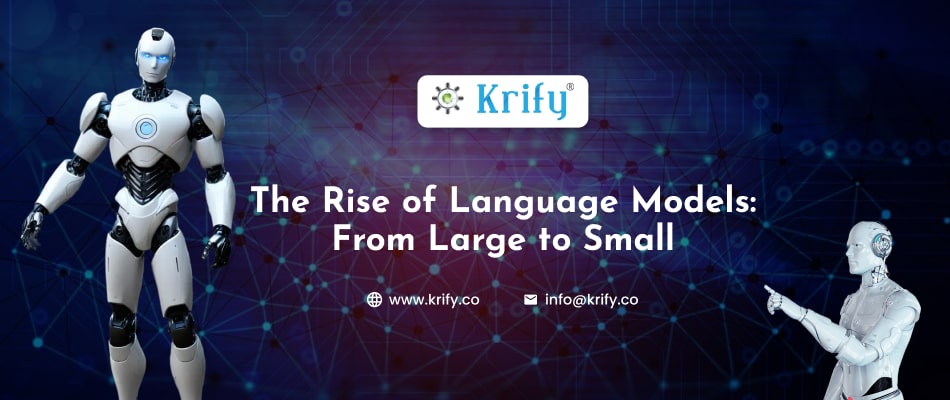Language models are pivotal in teaching machines to process and generate text that mirrors human communication. These models categorize into two types: Large Language Models (LLMs) and Small Language Models (SLMs), each serving unique functions across various applications.
What is a Large Language Model (LLM)?
Large Language Models (LLMs) such as GPT (Generative Pre-trained Transformer), BERT (Bidirectional Encoder Representations from Transformers), and others represent the cutting edge of AI research. These models typically have hundreds of billions of parameters—the individual elements of the model that learn from data—which enable them to process and generate language with an unprecedented level of sophistication.
Training LLMs on vast datasets compiled from books, websites, and other texts allows them to develop a broad understanding of language, context, and even specific knowledge domains. For example, OpenAI’s GPT-3 has shown remarkable versatility, capable of composing essays, answering questions, and even writing simple computer programs based on prompts given by users.
What is a Small Language Model (SLM)?
While LLMs have been garnering a lot of attention, Small Language Models (SLMs) have been making significant strides. These models, like Microsoft’s Phi-3-mini, are designed with fewer parameters—typically ranging from millions to a few billion. The primary advantage of SLMs is their efficiency and adaptability, allowing them to operate on devices with limited computational power and storage capacity.
SLMs are particularly well-suited for tasks that require fast response times and lower resource consumption. They can be implemented directly on mobile devices or embedded systems, facilitating applications such as real-time language translation in smartphones or operational commands in IoT devices without the need to communicate with a central server.
What is PHI-3?
PHI-3 refers to a family of Small Language Models developed by Microsoft, aimed at balancing performance with computational efficiency. PHI-3 models, including the notable Phi-3-mini, are tailored for rapid integration into consumer devices and industrial applications, demonstrating how SLMs can be both powerful and practical.
Differences Between LLMs and SLMs
-
Performance and Capability:
LLMs generally outperform SLMs in tasks involving deep reasoning, complex context handling, and extensive content generation due to their larger training datasets and higher parameter counts. For instance, in tasks like maintaining long-form discussions or generating high-quality, contextually appropriate text, LLMs like GPT-3 excel. On the other hand, SLMs, while not as powerful, still perform remarkably well in many practical applications. For example, an SLM might power a voice-activated assistant on a smartphone, handling tasks such as setting alarms, answering factual questions, or controlling smart home devices with efficiency and minimal latency.
-
Deployment and Scalability:
LLMs require significant computational resources not only for training but also for inference, making them less suitable for deployment in resource-constrained environments. In contrast, companies can deploy SLMs on a wide range of hardware, including those without constant cloud connectivity, making them ideal for edge computing scenarios.
-
Privacy and Latency:
With SLMs’ ability to operate locally, they offer advantages in terms of data privacy and operational latency. Since data does not need to be sent to the cloud for processing, personal information can be kept secure on the device, and decisions can be made faster without the delay of data transmission.
Examples of Large Language Models (LLMs) Usage:
-
Writing Assistance:
LLMs like GPT-3 can help you write essays or reports. You give it a topic, and it can generate a draft or help you expand your ideas, making it easier to start your writing assignments.
-
Language Translation:
Tools like Google Translate use LLMs to aid in translating languages. They can understand the context better than simpler tools, which means they can give more accurate translations of full sentences or even paragraphs.
-
Homework Help:
If you’re stuck on a math problem or a science question, LLMs can provide detailed explanations and guide you through solving them. They can act almost like a tutor, explaining complex concepts in an understandable way.
-
Coding:
For students learning to code, LLMs can suggest corrections and improvements to your code. They understand programming languages and can help debug your code or even teach you new programming techniques.
-
Interactive Learning:
LLMs can power interactive educational bots. Imagine a history bot that can answer detailed questions about historical events or figures, providing an engaging way for you to learn new topics.
Examples of Small Language Models (SLMs) Usage:
-
Smartphone Assistants:
Companies utilize SLMs in smartphone assistants like Siri or Google Assistant. They can understand your voice commands to set alarms, send messages, or get directions, all without needing to connect to the internet.
-
Wearable Devices:
In devices like smartwatches, SLMs can process your voice commands directly on the watch. You can ask about the weather, control music playback, or send quick replies to messages right from your wrist.
-
Home Automation:
SLMs are ideal for smart home devices, like smart speakers that control your lights or thermostat. Because they can run directly on the devices, they respond quickly and keep your data private.
-
Educational Toys:
Companies use SLMs in educational toys that interact with kids through voice or text. They can answer questions, play educational games, or help with language learning, all embedded in the toy itself.
-
Accessibility Tools:
For people needing assistance with reading or writing due to disabilities, SLMs can power tools that convert speech to text or read text out loud. These tools can operate directly on a personal device, providing immediate assistance without the need for internet access.
Conclusion
Both Large and Small Language Models showcase the versatility of AI technologies. LLMs tackle complex tasks, SLMs boost efficiency, shaping our digital interactions. Understanding AI’s capabilities in technology is crucial for future innovations as it becomes more integrated.
Focusing on these aspects optimizes your article for chosen keywords, increasing visibility to audiences interested in AI language models.
At Krify, we work with the latest AI models, including proprietary and open-source LLMs, and cloud-based AI tools. Our AI and ML engineers employ cutting-edge tools. If you need support developing AI-based mobile apps, agents, or innovative models, contact us.









